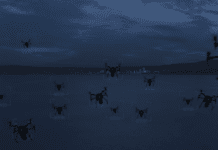This post is also available in:
 עברית (Hebrew)
עברית (Hebrew)
In a significant advancement for drone technology, the Tianmushan No. 1 has made its debut as the world’s first hydrogen-powered multi-rotor drone with a flight range of 100 kilometers. Developed at Tianmushan Laboratory, this drone marks a major milestone in unmanned aerial vehicle (UAV) capabilities.
The Tianmushan No. 1 addresses common limitations of traditional industrial drones, such as their short flight durations and susceptibility to extreme weather conditions. By incorporating hydrogen fuel cell technology, this drone offers impressive performance, including a four-hour flight time and the ability to operate in high-altitude and low-temperature environments.
Key features of the Tianmushan No. 1 include its one-key autonomous take-off and landing capabilities, which simplify operation and minimize human error. The drone also supports operation beyond-visual-range, enhancing its utility in remote areas. Weighing approximately 19 kilograms and able to carry up to 6 kilograms, it combines lightweight design with robust performance.
The drone’s hydrogen fuel cell system is a standout feature. This technology provides an energy density five to six times higher than traditional lithium batteries, allowing for extended flight times. The drone’s design includes a carbon fiber fuselage, an intelligent parachute system, and four carbon fiber hydrogen storage bottles, all contributing to its advanced capabilities. Its integrated parachute system, the first of its kind in a mass-produced hydrogen-powered drone, deploys automatically in the event of a malfunction, protecting both the drone and its surroundings.
Extensive testing has demonstrated the drone’s effectiveness in various applications, including oil and gas exploration, power inspection, emergency rescue, forest protection, and water conservancy monitoring, according to Interesting Engineering. The rigorous testing underscores the drone’s readiness for real-world scenarios.
The successful flight of the Tianmushan No. 1 represents a significant leap forward in drone technology and low-altitude operations. It highlights China’s commitment to advancing UAV capabilities and positions the Tianmushan No. 1 as a pioneering model in the industry. This development could pave the way for further innovations and applications in drone technology.

























